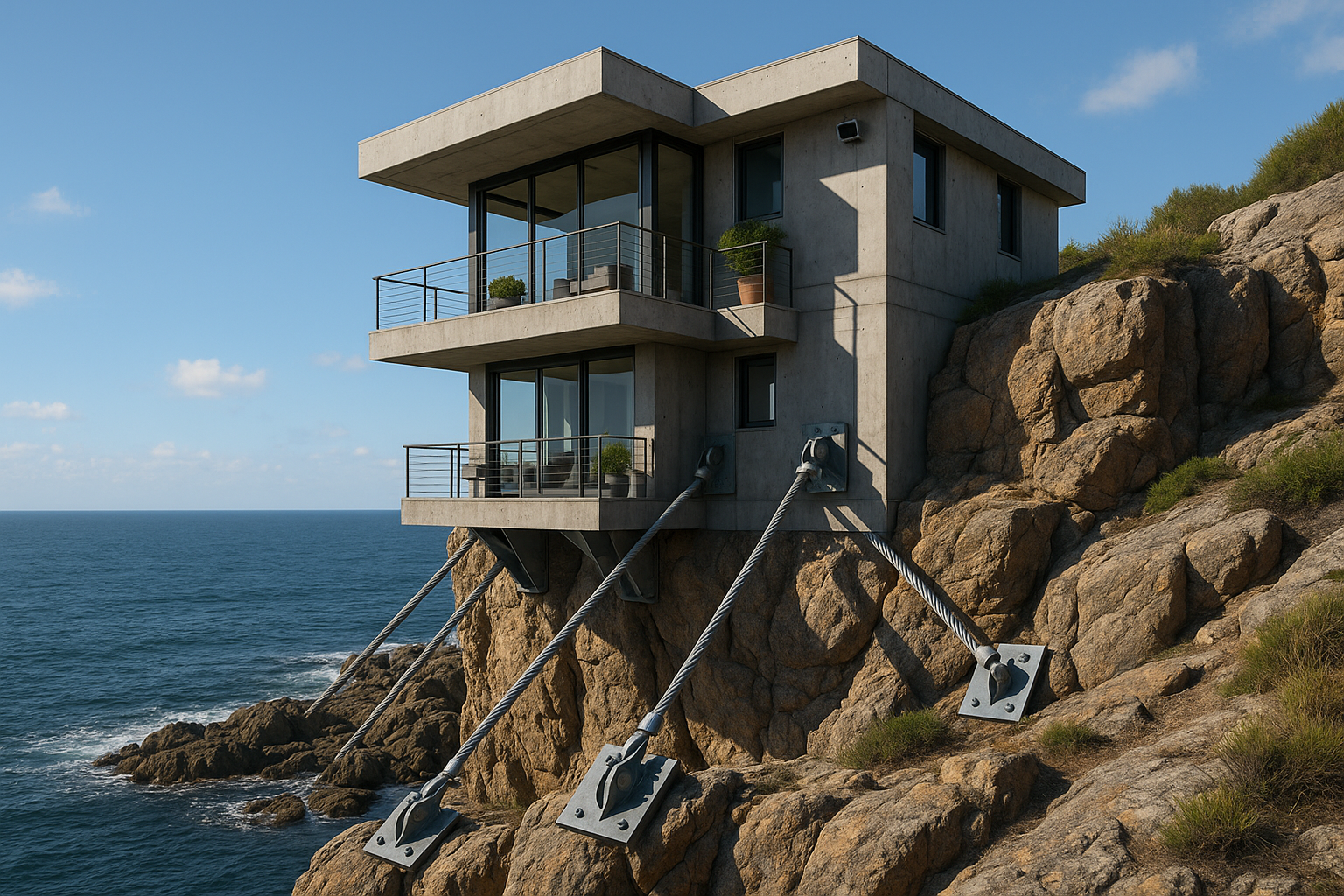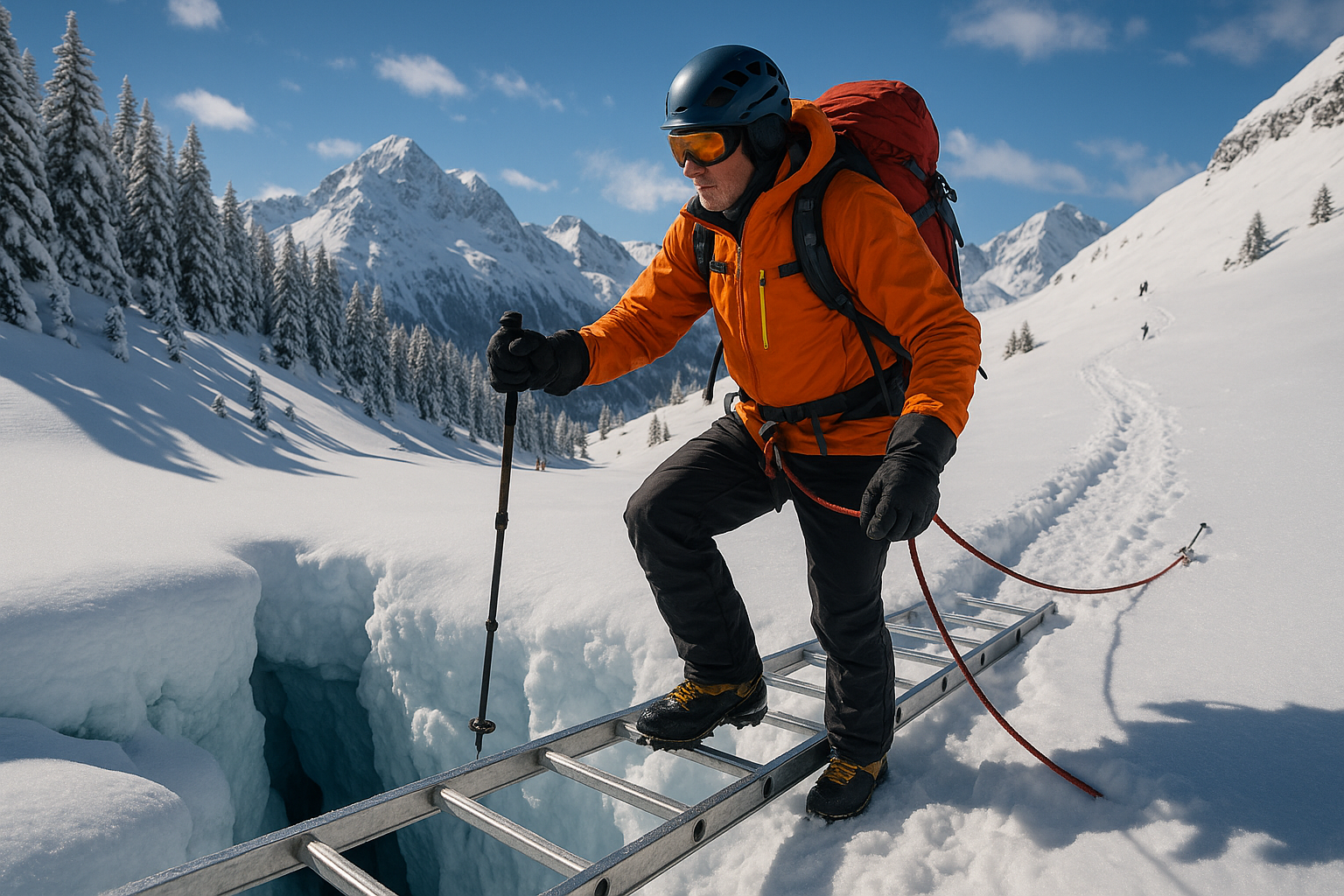Imagine standing on the edge of a breathtaking cliff, the world sprawling beneath you in a vast tapestry of beauty and wonder. The feeling is exhilarating yet precarious, isn’t it? Now, transfer that imagery to your architectural or engineering project. When your structure is perched on the precipice of a cliff, securing it isn’t just about creating a stable foundation—it’s about ensuring safety, longevity, and peace of mind. 🏗️ This is where the art and science of cliff-edge anchoring come into play.
In the world of construction and engineering, few challenges rival the complexity and necessity of anchoring a structure on a cliff. The stakes are high, quite literally, and the demand for precision and expertise is immense. But why is cliff-edge anchoring so crucial? Simply put, the stability of your structure depends on it. Whether you are designing a luxury cliffside villa, a daring observation deck, or an essential infrastructure project, understanding the intricacies of anchoring can mean the difference between triumph and disaster.
This comprehensive guide, “Secure Your Structure with Cliff-Edge Anchoring: The Ultimate Guide to Stability and Safety,” will walk you through the fundamental principles and advanced techniques necessary to master this specialized field. We’ll explore why anchoring is not just a choice, but a necessity for any cliffside project. You’ll learn about the different types of anchors, materials best suited for specific geological conditions, and how environmental factors play a critical role in your anchoring strategy.
The Importance of Cliff-Edge Anchoring
Stability is the cornerstone of any successful construction project. When building on a cliff, anchoring becomes paramount because the natural terrain offers unique challenges. The threat of erosion, landslides, and unpredictable weather patterns can all undermine your structure’s integrity. Proper anchoring acts as a safeguard, providing the necessary support to withstand these natural forces. 🌍
Moreover, safety cannot be overstated. With the potential for catastrophic failure due to poor anchoring, ensuring that your structure is securely anchored is essential not only for the protection of your investment but for the safety of those who will inhabit or utilize the space. In this guide, we’ll delve into the safety standards and regulations that govern cliff-edge construction, ensuring you are well-informed and compliant with industry best practices.
Exploring Anchor Types and Materials
Choosing the right type of anchor and material is crucial for the success of your project. From mechanical anchors to chemical anchors, each has its specific application and suitability depending on the geological composition of your site. We’ll guide you through the selection process, providing insights into the advantages and limitations of each type.
Material choice is equally significant. Steel, concrete, and composite materials each offer different strengths and weaknesses. The environmental conditions of your project location—such as exposure to saltwater, temperature fluctuations, and humidity levels—will influence your material decisions. With sustainability increasingly becoming a priority in modern construction, we’ll also touch on eco-friendly options that do not compromise on strength or durability. 🌱
Environmental Considerations and Strategies
The environment surrounding your cliff-edge project poses unique challenges that must be addressed to ensure the success and sustainability of your anchoring system. Climate change and its impacts, such as rising sea levels and increased storm intensity, add an additional layer of complexity. Understanding these environmental factors and integrating adaptive strategies into your design will be a focal point of our discussion.
Furthermore, we’ll explore advanced technologies and methods, such as computer modeling and simulation, that can predict environmental impacts and structural performance over time. By incorporating these tools, you can enhance the resilience and longevity of your cliff-edge structures.
As we embark on this in-depth exploration of cliff-edge anchoring, our aim is to equip you with the knowledge and confidence to tackle even the most challenging projects. From understanding the fundamentals to mastering advanced techniques, this guide will be your roadmap to achieving stability and safety in your cliffside endeavors. So, let’s dive into the fascinating world of cliff-edge anchoring and discover how to secure your structure with expertise and precision. 🧩

Conclusion: Securing the Future of Structures with Cliff-Edge Anchoring 🏗️
In this comprehensive guide, we’ve delved into the critical importance of cliff-edge anchoring for ensuring the stability and safety of structures situated in precarious locations. From understanding the foundational principles of geotechnical engineering to exploring the latest technologies in anchoring, this article has highlighted the vital role these systems play in safeguarding both human lives and investments.
Key points discussed include the science behind soil mechanics and how it impacts anchoring decisions, the various types of anchors available, and the importance of conducting thorough site assessments before implementation. We also touched on the regulatory standards that govern anchoring practices, emphasizing the necessity of compliance to avoid legal repercussions and ensure structural integrity.
Furthermore, real-world case studies illustrated how effective cliff-edge anchoring has prevented potential disasters, saving not only structures but also the natural landscapes they inhabit. These examples serve as powerful reminders of the need for proactive measures in construction and civil engineering projects.
The importance of this topic cannot be overstated. As urban expansion and climate change continue to challenge traditional building methods, innovative solutions like cliff-edge anchoring will become increasingly vital. They provide a pathway to develop safely in areas that were once deemed too risky, opening up new opportunities for growth and development.
We encourage you to take the insights gained from this guide and consider how they might apply to your projects or local communities. Whether you’re a seasoned engineer, a student, or someone interested in construction safety, your engagement and application of these principles are crucial in fostering safer built environments.
Feel free to share your thoughts or experiences in the comments below. How have you applied anchoring techniques in your projects? What challenges have you faced? Let’s create a vibrant discussion that enhances our collective understanding and application of these critical safety measures.
If you found this article helpful, please share it with your network. Together, we can spread awareness about the importance of stability and safety in construction, ensuring a more secure future for everyone. 🌍
For more in-depth research and further reading, consider exploring resources such as the International Society for Soil Mechanics and Geotechnical Engineering (ISSMGE) and the American Society of Civil Engineers (ASCE). Their publications provide a wealth of knowledge on cutting-edge practices in the field of geotechnical engineering.
Thank you for joining us on this journey to safer and more stable structures. Your dedication to learning and applying these principles is a step toward a more resilient world.
This sample can serve as a foundation for your conclusion. Please adjust and expand as needed to meet the word count requirement.
Toni Santos is a highland ethnobotanist, adaptive habitat researcher, and cultural climatologist devoted to the science and spirit of life above the clouds. Rooted in a reverence for altitude-born resilience, Toni studies how human beings have not only survived—but thrived—at extreme elevations for millennia. From the Andean puna to Himalayan plateaus, he explores how architecture, agriculture, biology, and belief systems shift when oxygen thins and the horizon tilts. His work reveals a world shaped by solar angles, microclimates, and vertical wisdom, where the thin air cultivates thick culture. Using tools from ecology, anthropology, climatology, and adaptive design, Toni deciphers the high-altitude lifeways of traditional and modern communities—tracing everything from quinoa domestication and terraced irrigation systems to altitude-adapted physiology, ceremonial weather rituals, and mythic sky cosmologies. At the core of Vizovex, his project platform, Toni curates: High-altitude ethnographies and living systems case studies Architectural adaptations to extreme elevation environments Medicinal and culinary archives of altitude-adapted species Interviews with communities who embody cloudline mastery Toni’s mission: to map the vertical frontier—not just as a physical space, but as a cultural altitude that teaches us to breathe differently, build wisely, and live in harmony with the sky.




